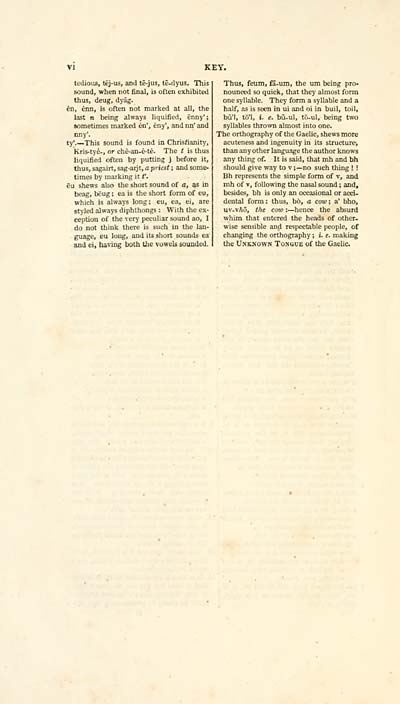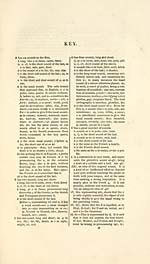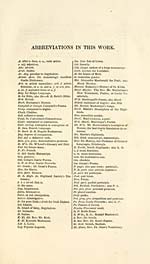Download files
Complete book:
Individual page:
Thumbnail gallery: Grid view | List view

VI
tedious, tej-us, and te-jus, tè-dyus. This
sound, when not final, is often exhibited
thus, deug, dyag.
en, ènn, is often not marked at all, the
last n being always liquified, enny';
sometimes marked èn', èny', and nn' and
nny'.
ty'.— This sound is found in Chrisfianity,
Kris-tyè-, or ehè-an.è-tè. The t is thus
liquified often by putting j before it,
thus, sagairt, sag-aijt, a priest ; and some-
times by marking it t'.
eu shews also the short sound of a, gs in
beag, beug ; ea is the short form of eu,
which is always long; eu, ea, ei, are
styled always diphthongs : With the ex-
ception of the very peculiar sound ao, I
do not think there is such in the lan-
guage, eu long, and its short sounds ea
and ei, having both the vowels sounded.
Thus, feum, fa-um, the um being pro-
nounced so quick, that they almost form
one syllable. They form a syllable and a
half, as is seen in ui and oi in buil, toil,
bCi'l, to'l, i. e. bù-ul, to-ul, being two
syllables thrown almost into one.
The orthography of the Gaelic, shews more
acuteness and ingenuity in its structure,
than any other language the author knows
any thing of. It is said, that mh and bh
should give way to v ;— no such thing ! !
Bh represents the simple form of v, and
mh of V, following the nasal sound ; and,
besides, bh is only an occasional or acci-
dental form: thus, bo, a cow; a' bho,
uv.vAò, the cow :— hence the absurd
whim that entered the heads of other-
wise sensible and respectable people, of
changing the orthography ; i. e. making
the Unknown Tongue of the Gaelic
tedious, tej-us, and te-jus, tè-dyus. This
sound, when not final, is often exhibited
thus, deug, dyag.
en, ènn, is often not marked at all, the
last n being always liquified, enny';
sometimes marked èn', èny', and nn' and
nny'.
ty'.— This sound is found in Chrisfianity,
Kris-tyè-, or ehè-an.è-tè. The t is thus
liquified often by putting j before it,
thus, sagairt, sag-aijt, a priest ; and some-
times by marking it t'.
eu shews also the short sound of a, gs in
beag, beug ; ea is the short form of eu,
which is always long; eu, ea, ei, are
styled always diphthongs : With the ex-
ception of the very peculiar sound ao, I
do not think there is such in the lan-
guage, eu long, and its short sounds ea
and ei, having both the vowels sounded.
Thus, feum, fa-um, the um being pro-
nounced so quick, that they almost form
one syllable. They form a syllable and a
half, as is seen in ui and oi in buil, toil,
bCi'l, to'l, i. e. bù-ul, to-ul, being two
syllables thrown almost into one.
The orthography of the Gaelic, shews more
acuteness and ingenuity in its structure,
than any other language the author knows
any thing of. It is said, that mh and bh
should give way to v ;— no such thing ! !
Bh represents the simple form of v, and
mh of V, following the nasal sound ; and,
besides, bh is only an occasional or acci-
dental form: thus, bo, a cow; a' bho,
uv.vAò, the cow :— hence the absurd
whim that entered the heads of other-
wise sensible and respectable people, of
changing the orthography ; i. e. making
the Unknown Tongue of the Gaelic
Set display mode to: Large image | Transcription
Images and transcriptions on this page, including medium image downloads, may be used under the Creative Commons Attribution 4.0 International Licence unless otherwise stated. ![]()
| Early Gaelic Book Collections > Blair Collection > Argyleshire pronouncing Gaelic dictionary > (10) |
|---|
| Permanent URL | https://digital.nls.uk/76240016 |
|---|
| Description | A selection of books from a collection of more than 500 titles, mostly on religious and literary topics. Also includes some material dealing with other Celtic languages and societies. Collection created towards the end of the 19th century by Lady Evelyn Stewart Murray. |
|---|
| Description | Selected items from five 'Special and Named Printed Collections'. Includes books in Gaelic and other Celtic languages, works about the Gaels, their languages, literature, culture and history. |
|---|

